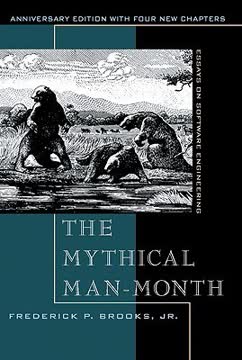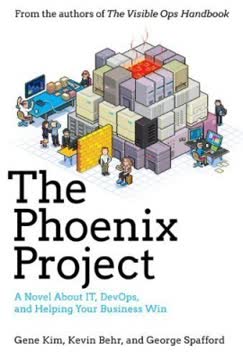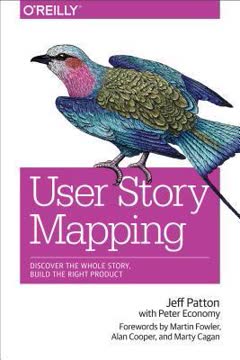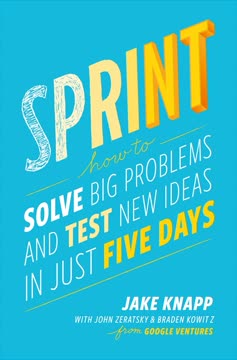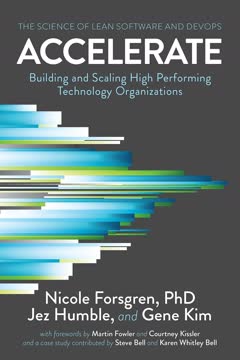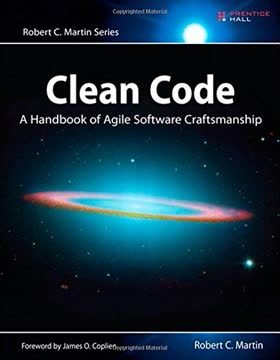نکات کلیدی
1. شروع پروژه: رویکردی چابک برای آغاز پروژه
"شروع پروژه شامل فعالیتها و تمرینهایی است که برای پرداختن به سه بعد آغازین ذکر شده (محصول، فرآیند و افراد) طراحی شدهاند."
آغاز کارآمد پروژه. شروع پروژه یک دوره سه هفتهای از همکاری فشرده است که برای راهاندازی پروژههای چابک طراحی شده است. این دوره بر سه بعد اصلی تمرکز دارد:
- محصول: تعریف مشکل مشتری، اهداف کسبوکار و چشمانداز راهحل
- فرآیند: تعیین نحوه همکاری تیم و ارائه ارزش
- افراد: درک دینامیک تیم، نقاط قوت و سبکهای کاری
این رویکرد نیاز به آمادگی را با اصول چابک متعادل میکند و از مراحل برنامهریزی طولانی اجتناب میکند در حالی که همراستایی در جهت پروژه را تضمین میکند. این دوره شامل فعالیتهایی مانند تعریف معیارهای موفقیت، نقشهبرداری از وضعیت فعلی و آینده و توسعه فهرستهای اولیه محصول است.
2. آمادهسازی: ارزیابی زمینه پروژه و آمادهسازی برای موفقیت
"هیچ دو سازمانی یکسان نیستند و تاریخچه، دینامیک افراد، پیچیدگی و بسیاری از ظرافتهای دیگر یک تیم و سازمان باید نقش بزرگی در تعیین نحوه آغاز پروژه ایفا کنند."
زمینه مهم است. قبل از ورود به شروع پروژه، ضروری است که زمینه پروژه را درک کنید:
- افراد: شناسایی ذینفعان کلیدی، نقشها، انگیزهها و تجربیات پروژههای گذشته آنها
- وضعیت فعلی: تحلیل تحقیقات مشتری موجود، نقشههای فرآیند و ارزیابیهای فنی
- چشمانداز آینده: بررسی هرگونه کار کشف یا چشمانداز قبلی
- پیشینه سازمانی: ارزیابی بلوغ چابک، فرهنگ و درسهای پروژههای گذشته
این ارزیابی به تطبیق شروع پروژه با نیازهای خاص سازمان و پروژه کمک میکند. این اطمینان میدهد که کارهای موجود به کار گرفته میشوند و چالشهای بالقوه زود شناسایی میشوند.
3. تحلیل وضعیت فعلی: سفر مشتری، فرآیند کسبوکار و معماری
"برای درک بهتر نحوه تعامل مشتریان با محصول موجود و تصور بهبود تجربه آنها، با تیم خود برای توسعه مشترک سفرهای مشتری در وضعیت فعلی (همانطور که هست) کار کنید."
درک پایه. تحلیل وضعیت فعلی شامل سه جزء کلیدی است:
- نقشهبرداری سفر مشتری: تجسم نحوه تعامل مشتریان با محصول
- نقشهبرداری فرآیند کسبوکار از ابتدا تا انتها: مستندسازی فرآیندهای داخلی برای ارائه ارزش
- تحلیل معماری فعلی: درک اجزای سیستم موجود و تعاملات
این فعالیتها به شناسایی نقاط درد، ناکارآمدیها و فرصتهای بهبود کمک میکنند. آنها درک مشترکی از نقطه شروع پروژه ارائه میدهند و طراحی راهحلهای آینده را اطلاع میدهند.
4. تصور آینده: طراحی محصول حداقل قابل عرضه (MMP)
"محصول حداقل قابل عرضه (MMP) کوچکترین قطعه عملکردی است که میتواند ارائه شود و برای مشتری و کسبوکار ارزش دارد و به ما بازخورد ارزشمندی درباره اینکه آیا عملکرد درست را میسازیم و همچنین آیا آن را به درستی میسازیم، ارائه میدهد."
تمرکز بر حداقل قابلیت. MMP اولین بخش از محصول است که باید منتشر شود:
- کوچکترین مجموعه ویژگیهایی که به مشتریان و کسبوکار ارزش میدهند
- طراحی شده برای جمعآوری بازخورد اولیه و اعتبارسنجی فرضیات
- تعادل بین نیاز به سرعت و ارائه یک محصول قابل عرضه
برای طراحی MMP:
- از مدل 7 بعد محصول برای شناسایی گزینههای با ارزش بالا استفاده کنید
- وایرفریمها یا نمونههای اولیه برای آزمایش کاربر و بازخورد ایجاد کنید
- بر اساس ورودی کاربر برای اصلاح طراحی MMP تکرار کنید
5. تجزیه چشمانداز: از اپیکها به داستانهای کاربر
"اپیکها بلوکهای کاری با اهداف و نتایج قابل اندازهگیری هستند که به نقاط درد یا شکافها میپردازند. روایت/متن یک اپیک کوتاه، ساده و به زبان مشتری چیزی را که مشتری میخواهد یا نیاز دارد توصیف میکند."
تجزیه برای تحویل. تجزیه چشمانداز محصول به قطعات قابل مدیریت شامل:
- شناسایی اپیکها: قطعات بزرگ و سطح بالای عملکرد
- تجزیه اپیکها به داستانهای کاربر: ویژگیهای کوچکتر و قابل اجرا
- تخمین و اولویتبندی: ارزیابی تلاش و ارزش کسبوکار برای هر داستان
این فرآیند به ترجمه چشمانداز مفهومی به اقلام کاری ملموس و قابل اجرا کمک میکند. این امکان را به تیم میدهد تا تلاشهای توسعه خود را برنامهریزی کنند و مبنایی برای برنامهریزی انتشار فراهم میکند.
6. برنامهریزی برای موفقیت: برنامهریزی انتشار و مدیریت ریسک
"نقشهبرداری داستانهای کاربر سطح بالا به اسپرینتها یا ماهها، پس از محاسبه تقریبی ظرفیت مورد انتظار تیم (مقدار کاری که تیم انتظار میرود در یک بازه زمانی خاص انجام دهد) و تخمینهای تلاش داستان کاربر که قبلاً محاسبه شدهاند، میتواند پاسخ تقریبی به این سوال بدهد که آیا برنامه MMP واقعبینانه است."
برنامهریزی استراتژیک. برنامهریزی انتشار شامل:
- نقشهبرداری داستانهای کاربر به اسپرینتها یا ماهها
- تخمین ظرفیت تیم و تلاش داستان
- تعادل بین دامنه MMP و جدول زمانی واقعبینانه
مدیریت ریسک به همان اندازه مهم است:
- شناسایی ریسکهای بالقوه در ابعاد مشتری، کسبوکار، فناوری و تیم
- ارزیابی احتمال و تأثیر ریسکها
- توسعه استراتژیهای کاهش برای ریسکهای با اولویت بالا
این فعالیتها به تنظیم انتظارات واقعبینانه و آمادهسازی تیم برای چالشهای بالقوه کمک میکنند.
7. تقویت همکاری: توسعه توافقات کاری تیم و روشهای کار
"پر کردن بوم توافق کاری تیم با هم یک تمرین عالی برای ایجاد هویت تیم است."
ایجاد انسجام تیمی. ایجاد توافقات کاری واضح و روشهای کار برای موفقیت تیم حیاتی است:
- توسعه هویت تیم: انتخاب نام و شعار تیم
- تعریف مأموریت و ارزشهای تیم
- شناسایی نقاط قوت فردی و جمعی و فرصتهای رشد
- تعیین هنجارها برای ارتباطات، تصمیمگیری و حل تعارض
- توافق بر روی شیوهها و مراسم چابک برای پیروی
این توافقات به ایجاد درک مشترک از نحوه کار تیم با هم کمک میکنند، همکاری را تقویت میکنند و پایهای برای یک تیم چابک با عملکرد بالا ایجاد میکنند.
آخرین بهروزرسانی::
FAQ
What's "The Agile Initiation Playbook" about?
- Comprehensive guide: "The Agile Initiation Playbook" by Ayman Idris is a detailed guide for launching large Agile projects, focusing on the Initiation Sprint phase.
- Practical approach: It provides a step-by-step roadmap for setting the stage for Agile project initiation, emphasizing collaboration and stakeholder alignment.
- Real-world application: The book follows a real Initiation Sprint facilitated for a large bank, detailing activities and exercises to explore project themes and questions.
- Hands-on resource: It aims to equip readers with the confidence to facilitate an Initiation Sprint end-to-end, even without prior experience in large-scale facilitation.
Why should I read "The Agile Initiation Playbook"?
- Practical insights: The book offers practical, hands-on guidance for initiating Agile projects, making it valuable for facilitators, sponsors, and participants.
- Real-world examples: It includes a case study of a large bank's Initiation Sprint, providing real-world context and application of Agile principles.
- Comprehensive coverage: The book covers all aspects of the Initiation Sprint, from setting the stage to closing the Sprint and preparing for development.
- Facilitation support: It provides facilitation guides for each activity, helping readers apply the concepts in their own projects.
What are the key takeaways of "The Agile Initiation Playbook"?
- Importance of alignment: The book emphasizes the need for broad alignment among stakeholders on the project's initial direction.
- Structured initiation: It introduces the concept of the Initiation Sprint, a three-week period of intensive collaboration to explore key project themes.
- Focus on exploration: Initiation is about exploring and building a shared understanding, not finding final answers to all questions.
- Practical tools: The book provides tools and techniques for facilitating various activities, from mapping customer journeys to developing a testing strategy.
What is the Initiation Sprint in "The Agile Initiation Playbook"?
- Definition: The Initiation Sprint is a three-week period of intensive collaboration to explore key project themes and questions.
- Purpose: It aims to create broad alignment among stakeholders and build a shared understanding of the project's initial direction.
- Activities: The Sprint includes activities like mapping customer journeys, envisioning future states, and developing a testing strategy.
- Outcome: By the end of the Sprint, the team should have a plan for starting development and a collective recognition of project challenges.
How does "The Agile Initiation Playbook" define success for an Agile project?
- Shared understanding: Success involves building a shared understanding of the project's goals, challenges, and stakeholder expectations.
- Alignment: Achieving broad alignment among stakeholders on the project's initial direction is crucial.
- Iterative approach: Success is not about finding final answers but about exploring and iterating on ideas and assumptions.
- Quality and collaboration: A successful project is one where the team collaborates effectively and builds a high-quality product.
What are the key components of the Initiation Sprint in "The Agile Initiation Playbook"?
- Product dimension: Understanding the customer problem, business goals, and desired outcomes is essential.
- Process dimension: Defining how the team will work together, including meetings, roles, and tools, is crucial.
- People dimension: Identifying the people involved, their aspirations, and working styles helps build a cohesive team.
- Flow and deliverables: The Sprint includes activities like mapping current and future states, developing strategies, and building a social contract.
How does "The Agile Initiation Playbook" suggest handling risks in Agile projects?
- Risk identification: The book emphasizes the importance of identifying potential risks early in the project.
- Risk assessment: It suggests assessing risks based on their likelihood and impact to prioritize them effectively.
- Mitigation strategies: Developing strategies to address risks, such as mitigation, avoidance, or containment, is crucial.
- Regular review: The book recommends revisiting risks regularly to ensure they are managed effectively throughout the project.
What is the role of stakeholders in "The Agile Initiation Playbook"?
- Engagement: The book highlights the importance of engaging stakeholders early and often to gather feedback and ensure alignment.
- Communication: It suggests developing a communication plan to keep stakeholders informed and involved throughout the project.
- Influence: Understanding stakeholders' influence and interest helps prioritize their engagement and address their concerns.
- Collaboration: The book emphasizes the need for collaboration with stakeholders to build a high-quality product that meets their needs.
How does "The Agile Initiation Playbook" address team collaboration?
- Social contract: The book suggests developing a social contract to establish ground rules for collaboration and communication.
- Working agreements: It emphasizes the importance of agreeing on how the team will work together, including decision-making and conflict resolution.
- Continuous improvement: The book encourages regular retrospectives to reflect on team dynamics and identify areas for improvement.
- Diverse perspectives: It highlights the value of diverse perspectives and encourages team members to share their ideas and assumptions.
What are the best quotes from "The Agile Initiation Playbook" and what do they mean?
- "Initiation is a process of exploration": This quote emphasizes that the goal of initiation is to explore and build a shared understanding, not to find final answers.
- "Success is about alignment": This highlights the importance of achieving broad alignment among stakeholders on the project's initial direction.
- "Agile is about collaboration": This underscores the value of collaboration and communication in building a high-quality product.
- "Iterate and learn": This quote reflects the Agile principle of iterating on ideas and learning from feedback to improve the product.
How does "The Agile Initiation Playbook" suggest mapping customer journeys?
- Current-state mapping: The book suggests mapping the current customer journey to identify pain points and areas for improvement.
- Future-state envisioning: It encourages envisioning a transformed customer journey that addresses existing pain points and enhances the user experience.
- Collaborative effort: Mapping customer journeys is a collaborative activity that involves input from various stakeholders and team members.
- Iterative process: The book emphasizes that customer-journey mapping is an iterative process that evolves as the team learns more about the customer and the product.
What is the Minimum Marketable Product (MMP) in "The Agile Initiation Playbook"?
- Definition: The MMP is the smallest piece of functionality that can be delivered to customers and provides valuable feedback.
- Value delivery: It should deliver value to both the customer and the business, allowing the team to learn and iterate.
- Scope: The MMP includes all necessary features, training, documentation, and support for value realization.
- Iterative approach: The book emphasizes releasing the MMP early to gather feedback and improve the product incrementally.
نقد و بررسی
کتاب اسکرام ضروری: راهنمای عملی برای محبوبترین فرآیند چابک از سوی خوانندگان به دلیل پوشش جامع اصول و روشهای اسکرام مورد تحسین قرار گرفته است. منتقدان از توضیحات واضح، مثالهای عملی و تصاویر مفید آن قدردانی میکنند. بسیاری از افراد این کتاب را برای مبتدیان و همچنین متخصصان با تجربه مفید میدانند و به ارزش آن به عنوان یک راهنمای مرجع اشاره میکنند. این کتاب به دلیل رویکرد متعادل خود که به دیدگاههای مختلف ذینفعان میپردازد، ستایش میشود. برخی از خوانندگان به طول و جزئیات آن اشاره کرده و پیشنهاد میکنند که میتوانست مختصرتر باشد. به طور کلی، این کتاب به شدت برای کسانی که به دنبال درک و اجرای مؤثر اسکرام هستند، توصیه میشود.
Similar Books

